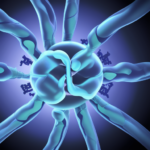The potential of gene editing technology to cure diseases
The potential of gene editing technology to cure diseases
Introduction to Gene Editing Technology:
Gene editing technology is a revolutionary tool that enables scientists to modify the DNA of living organisms, including humans. This technology allows for precise alterations to be made to the genetic code, offering the potential to cure genetic diseases by correcting faulty genes. One of the most promising gene editing techniques is CRISPR-Cas9, which can target specific genes with remarkable accuracy.
Understanding Genetic Diseases:
Genetic diseases are caused by mutations in the DNA sequence that lead to abnormalities in gene function. These diseases can be inherited from one or both parents and can result in a wide range of health issues, from mild to severe. Examples of genetic diseases include cystic fibrosis, sickle cell anemia, and Huntington’s disease.
How Gene Editing Technology Works:
Gene editing technology works by using molecular tools to make changes to the DNA sequence of an organism. CRISPR-Cas9, for example, consists of a guide RNA that targets a specific gene and a Cas9 protein that acts as molecular scissors to cut the DNA at that location. Scientists can then introduce a desired genetic change or repair the faulty gene. The modified DNA is then inserted back into the organism’s cells, where it can function normally.
Applications of Gene Editing in Disease Treatment:
Gene editing technology has the potential to revolutionize the treatment of genetic diseases. By correcting faulty genes, scientists can potentially cure these diseases at their root cause. This technology can be applied to a wide range of genetic disorders, including single-gene mutations and complex genetic conditions. In addition to curing genetic diseases, gene editing can also be used to enhance the body’s ability to fight off diseases, such as by boosting the immune system or increasing resistance to infections.
Challenges and Ethical Considerations:
While gene editing technology holds great promise for the treatment of diseases, it also poses some challenges and raises ethical considerations. One of the main challenges is ensuring the safety and accuracy of gene editing techniques, as off-target effects could lead to unintended consequences. Additionally, there are ethical concerns surrounding the use of gene editing in humans, such as the potential for designer babies or the creation of genetic ‘enhancements’ that could lead to social inequalities. It is important for scientists, ethicists, and policymakers to carefully consider these issues and establish guidelines for the responsible use of gene editing technology.
Current and Future Developments:
Currently, researchers are actively exploring the potential of gene editing technology in both basic research and clinical applications. Clinical trials are underway to test the use of gene editing in treating genetic diseases such as sickle cell anemia and Duchenne muscular dystrophy. In the future, gene editing technology may also be used to treat non-genetic diseases, such as cancer, by targeting specific genes involved in tumor growth. As the technology continues to advance, the possibilities for using gene editing to cure diseases are only expected to grow.


